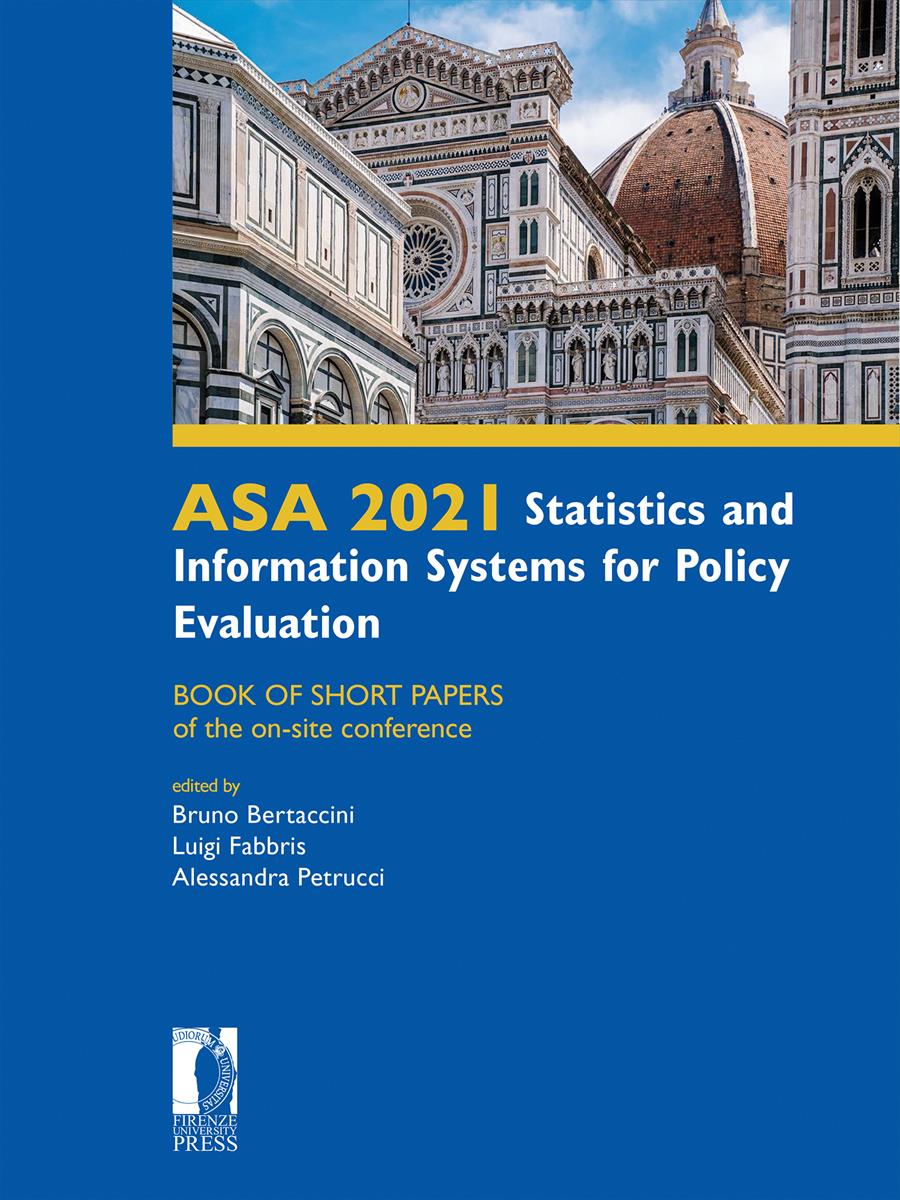- ASA 2021 Statistics and Information Systems for Policy Evaluation
- A cura di Bruno Bertaccini, Luigi Fabbris, Alessandra Petrucci
Sizing & Allocation in Labour Market: business strategies and multivariate analysis
- Andrea Marletta
- © 2021 Author(s) |
- CC BY 4.0
- DOI: 10.36253/978-88-5518-461-8.23
In Labour Market, the issue of Sizing and Allocation is a discussed problem. In this study, this topic has been considered from a statistical point of view. Indeed, the choice to change the number of your team of employees in a business context needs a very accurate analysis. If for example a firm decides to launch a new product on the market, it could be necessary to recruit new resources. The proposed statistical approach aims to give some hints about the total number of employees analysing the features of the existing market and the territorial geography. From a statistical point of two techniques of multivariate analysis have been presented as exploratory tools. In the application, a Principal Component Analysis has been used to investigate the business environment after some qualitative interviews to the board of the company. In a second step, some different scenarios have been proposed to determine the exact number of new resources using a data hybridization technique including internal and external sources. Finally, the allocation of the new hired of the scenarios on the Italian territory has been achieved thanks to the construction of a territorial potential index.
- Keywords:
- Labour Market,
- Multivariate analysis,
- Number of employees,
University of Milano-Bicocca, Italy - ORCID: 0000-0002-4050-5316
- Istat a. (2020). Health for All. <https://www.istat.it/it/archivio/14562>.
- Istat b. (2020). Geo-demo. <http://demo.istat.it/>.
- Jolliffe, I. T. (2002). Principal Component Analysis, 2nd edn. Series: Springer Series in Statistics, XXIX, 487. illus. Springer, NY, 28.
- Mariani, P., (2002). La statistica in azienda, contesti ed applicazioni. Franco Angeli, Milano.
Informazioni sul capitolo
Titolo del capitolo
Sizing & Allocation in Labour Market: business strategies and multivariate analysis
Autori
Andrea Marletta
Lingua
English
DOI
10.36253/978-88-5518-461-8.23
Opera sottoposta a peer review
Anno di pubblicazione
2021
Copyright
© 2021 Author(s)
Licenza d'uso
Licenza dei metadati
Informazioni bibliografiche
Titolo del libro
ASA 2021 Statistics and Information Systems for Policy Evaluation
Sottotitolo del libro
BOOK OF SHORT PAPERS of the on-site conference
Curatori
Bruno Bertaccini, Luigi Fabbris, Alessandra Petrucci
Opera sottoposta a peer review
Anno di pubblicazione
2021
Copyright
© 2021 Author(s)
Licenza d'uso
Licenza dei metadati
Editore
Firenze University Press
DOI
10.36253/978-88-5518-461-8
eISBN (pdf)
978-88-5518-461-8
eISBN (xml)
978-88-5518-462-5
Collana
Proceedings e report
ISSN della collana
2704-601X
e-ISSN della collana
2704-5846
